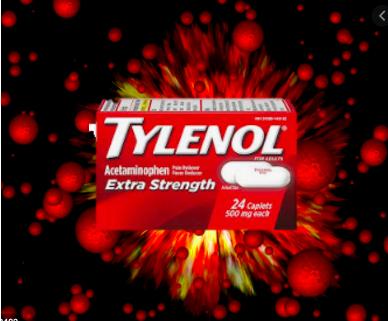It should be fairly clear that I'm not a big fan of Tylenol. It is dangerous and barely works for anything, but that hasn't stopped IV Tylenol from becoming the darling of surgeons and anesthesiologists who want to deny or minimize opioid treatment – even for a short time following surgery. The big push toward the drug (brand name Ofirmev, generic name is IV acetaminophen), which earned Mallinckrodt $112 million (1) in the fourth quarter of 2019 alone, is driven by the pervasive anti-opioid mentality that still grips our country as well as the desire to avoid post-op nausea and vomiting (2). That's all well and good, but if IV Tylenol isn't effective for pain control its use in order to minimize nausea and vomiting becomes absurd.
“We live in an era of opioid-related problems, and everybody is trying to use nonopioid alternatives...One of these is intravenous acetaminophen, which drove a lot of attention when it was first introduced."
Alparslan Turan, MD, Professor of the Dept. of Outcomes Research, Cleveland Clinic, in Anaesthesiolgy News, 1/21/21
The literature is jam-packed with studies about the effect (or lack thereof) of IV Tylenol in controlling pain from a variety of surgical procedures, but virtually all of them are retrospective studies, which are inferior to controlled prospective studies with a predetermined endpoint(s) and a control group (usually placebo). See my colleague Dr. Alex Berezow's excellent discussion of the relative merit of different types of studies.)
Well, we now have a randomized, double-blind, placebo-controlled trial (the gold standard of clinical trials) and if this doesn't take the Tylenol needle out of your arm nothing will. Lead author Alparslan Turan, MD, et. al., published the results in JAMA (there is also a summary of the JAMA paper in Anesthesiology News).
The trial
The Cleveland Clinic group enrolled 580 participants, all of whom were scheduled to have abdominal surgery. Half of the participants received one gram of IV Tylenol, the rest got a saline placebo. Doses of each were given every six hours for up to 48 hours (3).
The primary outcome was the amount of time that the patients had a blood oxygen saturation (SpO2) level less than 90% (hypoxemia).
This is rather bizarre. The reason that someone might get hypoxemia is opioid consumption. In other words, the primary outcome seems to be a surrogate marker for the real primary outcome – the amount of opioids consumed (!). It is the opioids that cause the hypoxemia, not the Tylenol or saline. But the secondary outcomes included post-op opioid consumption (which sure sounds like a primary outcome to me), as well as pain, nausea and vomiting, sedation, and respiratory function. I don't know why they did it this way, but it makes no difference:
“This was shocking to us...The difference [between IV Tylenol and placebo] is almost nothing.”
Alparslan Turan, MD
This is not shocking to any chronic pain patient.
The results
- Hypoxemia
The placebo group was hypoxemic for 0.7 minutes per hour. For the Tylenol, that number was 1.1 minutes per hour. This difference is clinically insignificant, and since the P-value was 0.29, it's not even close to being statistically significant either. Translation: the groups had the same oxygen levels because they consumed the same amount of an opioid. Why? Because the Tylenol did nothing to reduce their pain.
Opioid consumption
- The Tylenol group consumed 50 mg (measured as morphine milligram equivalents) of an opioid while the placebo group consumed 58 mg, but there was no statistical significance between the groups. In other words, both groups required the same amount of an opioid drug.
Pain Scores
- During the 48 hours post-op, the numerical pain scores were virtually identical: 4.2 for the Tylenol group and 4.4 for the placebo group.
Other secondary endpoints (postoperative nausea and vomiting, sedation, and respiratory function) were identical between the two groups.
Bottom Line
This trial was squeaky clean in the way it was designed, carried out, and the results measured and analyzed. At least for abdominal surgery, it is safe to say that IV Tylenol is thoroughly useless. It performed identically to placebo. Although it is possible that IV Tylenol would be of any use in other types of surgeries, that would be the real surprise.
Another Bottom Line
Pain patients, acute or chronic, have been getting a drug that has no utility for pain from abdominal surgery. In the mad dash to get away from opioids, we have become human guinea pigs for untested, unproven drugs. And it's not just Tylenol. Other drugs, possibly just as useless, such as antidepressants (SSRIs and tricyclics) and Neurontin, all with limited evidence of efficacy are being force-fed to pain patients in need of a real medicine simply to decrease opioid use just for the sake of doing so.
Some bad advice
Next time you run to the ER with a kidney stone and they offer you Tylenol, you might as well just ask for saline solution. It's cheaper and works just as well. Or not. Emergency rooms are not exactly the best places to make a statement.
NOTES:
(1) No wonder they made so much. A one-gram dose of Ofirmev will set you back $40. The actual cost of the undissolved drug is negligible.
(2) Post-operative nausea and vomiting from opioid use aren't uncommon but can be minimized by the use of antiemetic drugs and choice of the opioid used.
(3) The dosing time was less than 48-hours when the patient was discharged before that time.




